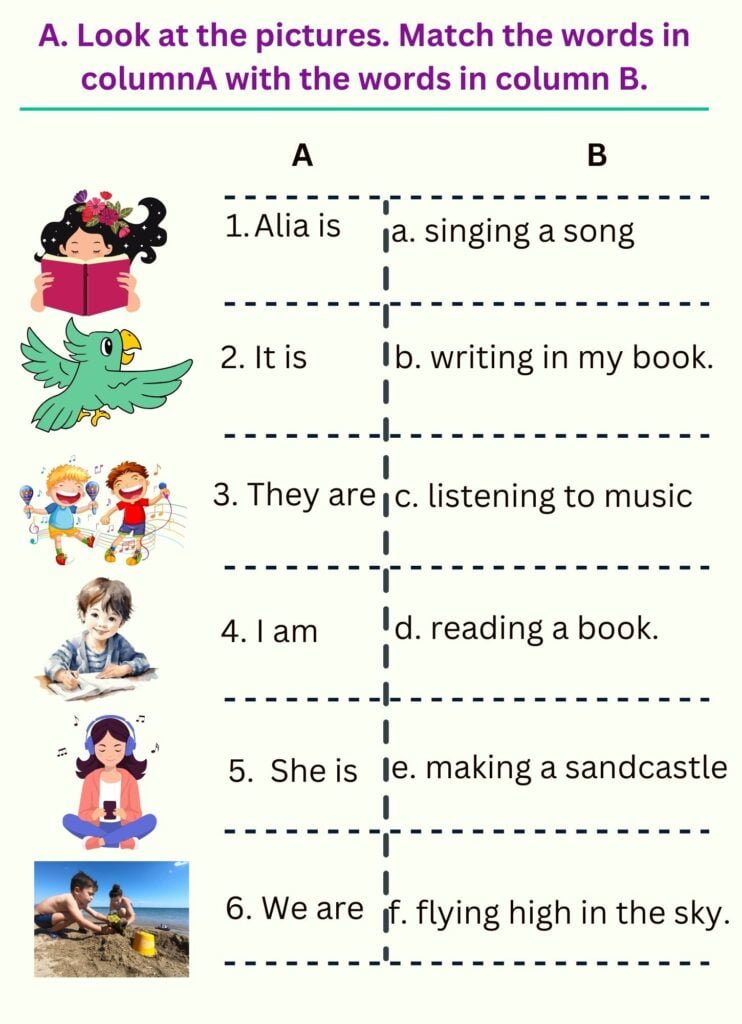Present Continuous Tense: Engaging Worksheet for Easy Learning

In the vibrant landscape of English grammar, the Present Continuous tense holds a unique place, often causing a mix of intrigue and confusion for learners. Imagine being able to convey actions that are happening right now or in the immediate future, painting a vivid picture of the present moment with just a few words. This tense offers a dynamic way to express oneself, enriching conversations and writings with its immediacy and presence. Today, we're diving deep into this tense with an engaging worksheet designed to make learning the Present Continuous tense both fun and educational.
What is Present Continuous?

Before we embark on our worksheet journey, let's clarify what the Present Continuous tense entails:
- Form: Subject + am/is/are + verb (base form) + -ing
- Usage: To describe:
- Something occurring at the moment of speaking.
- An action happening around now but not necessarily at the exact moment of speaking.
- A planned future action.
- A temporary action or state.
Worksheet: Mastering the Present Continuous Tense

1. Fill in the Blanks:

Complete the following sentences with the correct form of the verb in the Present Continuous tense:
- She (read) a book right now.
- We (watch) a movie this evening.
- He (not, eat) his lunch because he’s not hungry.
2. Rearrange Sentences:

Put these words in the correct order to form Present Continuous sentences:
- are/talking/They/not.
- cooking/Dinner/Mom/is.
- playing/Games/children/the/are.
3. Converse in Present Continuous:

Create short dialogues where characters are using the Present Continuous tense:
Dialogue 1:
- Person A: “Hey, what are you doing?”
- Person B: “I (painting)_ the wall. How about you?”
- Person A: “I (helping)_ my mom with some chores.”
4. Spot the Errors:

Identify and correct the errors in these sentences:
- They is playing basketball now.
- I amn’t eating fish because I don’t like it.
- We watching a documentary on TV tonight.
⚠️ Note: Make sure to pay attention to subject-verb agreement and avoid common mistakes like "amn't," which is not standard English.
5. Construct a Story:

Write a short story of at least 5 sentences using only the Present Continuous tense:
Applying What You've Learned

Now that you've engaged with the worksheet, let's take a moment to reflect on why the Present Continuous tense is so valuable:
- It helps you communicate live actions, giving your speech or writing an immediate, 'in-the-moment' feel.
- This tense is perfect for describing current trends or situations, making it incredibly useful in daily conversations or media updates.
- Understanding and correctly using the Present Continuous allows for more nuanced expression, enhancing your ability to convey the temporality of actions.
- It aids in planning and discussing future events, bridging the gap between now and then.
As we wrap up our exploration of the Present Continuous tense, it's clear that mastering this aspect of English grammar not only expands your linguistic toolkit but also enriches your communication skills. Through the engaging activities in our worksheet, you've not only learned the structure and usage but also practiced using it in various contexts, making learning both interactive and effective.
What are some common mistakes when using the Present Continuous tense?

+
Common mistakes include using “be” forms incorrectly with subjects, like “she is play,” or overusing the Present Continuous for actions not happening in the immediate now or near future, such as “I am read a book next week.”
How can I remember when to use the Present Continuous tense?

+
Think of this tense as capturing a snapshot of life right now. When an action or situation is dynamic, temporary, or happening around the time of speaking, the Present Continuous is likely the right choice. Practice with real-life situations can also reinforce when to use it.
Is the Present Continuous tense used differently in different languages?

+
Yes, many languages have their equivalent of the Present Continuous, but the structure, usage, and emphasis can differ greatly. For example, some languages might use special verb forms or auxiliary words to express ongoing actions, while others might have entirely different concepts of present time.